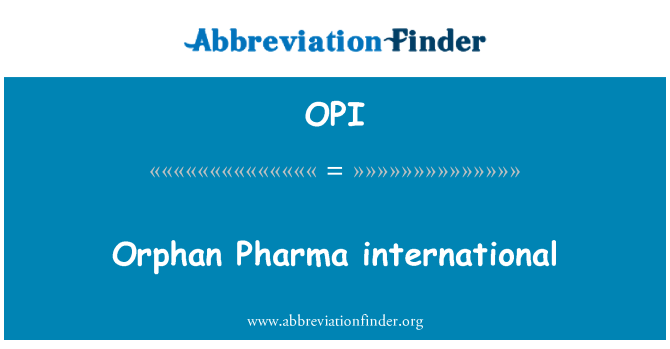
Define orphan license#
Sponsors may not apply for orphan drug designation for products which marketing applications have already been filed or that already have approval under a New Drug application (NDA) or Biologic License application (BLA) for the disease or condition for which orphan status is requested. More than one sponsor may receive orphan drug designation for the same drug that addresses the same rare disease or condition, but each sponsor seeking orphan drug designation must file a complete/separate request for designation.

Orphan drug designations may be requested by sponsors for a previously unapproved drug or for a new orphan indication for an already marketed drug. Product Eligibility for Orphan Drug Designation Eligibility to receive regulatory assistance and guidance from the FDA in the design of an overall drug development plan.Ability to qualify to compete for research grants from the Office of Orphan Products Development (OOPD) to support clinical studies for orphan drugs.A value of approximately $2.9 million in 2021.Waiver of Prescription Drug User Fee Act (PDUFA) fees for orphan drugs.Tax credits may be applied to prior year or applied over as many as 20 years to future taxes.

25% federal tax credit for expenses incurred in conducting clinical research within the United States.7-year marketing exclusivity to sponsors of approved orphan products.In response to this, the FDA has created multiple incentives to make orphan drug development more financially possible for companies to pursue. One of the biggest challenges for companies developing drugs for rare diseases is that due to the small target population size, sponsors are unlikely to recoup the cost of research, development, and approval from the orphan drug product. To put that into context, less than 10 orphan drug products were brought to market between a ten-year period from 19. Since the inception of the Orphan Drug Act, more than 4,500 orphan designation requests have been granted, and over 730 drugs and biologic products have been developed and approved for more than 250 rare diseases. By definition, a disease or condition is classified as “rare” if it affects fewer than 200,000 people total in the United States, or if the cost of developing a drug and making it available in the United States for such diseases or conditions will exceed any potential profits from its sale. The Orphan Drug Act of 1983 was designed to promote the development of drugs, biologics, devices, or medical foods that demonstrate promise for the diagnosis and/or treatment of rare diseases or conditions. Since then, many companies have taken advantage of the orphan drug designation and its incentive programs for rare disease drug development. In 1983, Congress passed the Orphan Drug Act to incentivize development of orphan drugs to meet unmet needs. This is mostly due to the financial risks of recouping the costs of drug development.


An estimated 30 million people in the United States are afflicted with rare (orphan) diseases or conditions however, the availability of novel treatments for these diseases and conditions has been historically low compared to conditions with a higher prevalence.


 0 kommentar(er)
0 kommentar(er)
